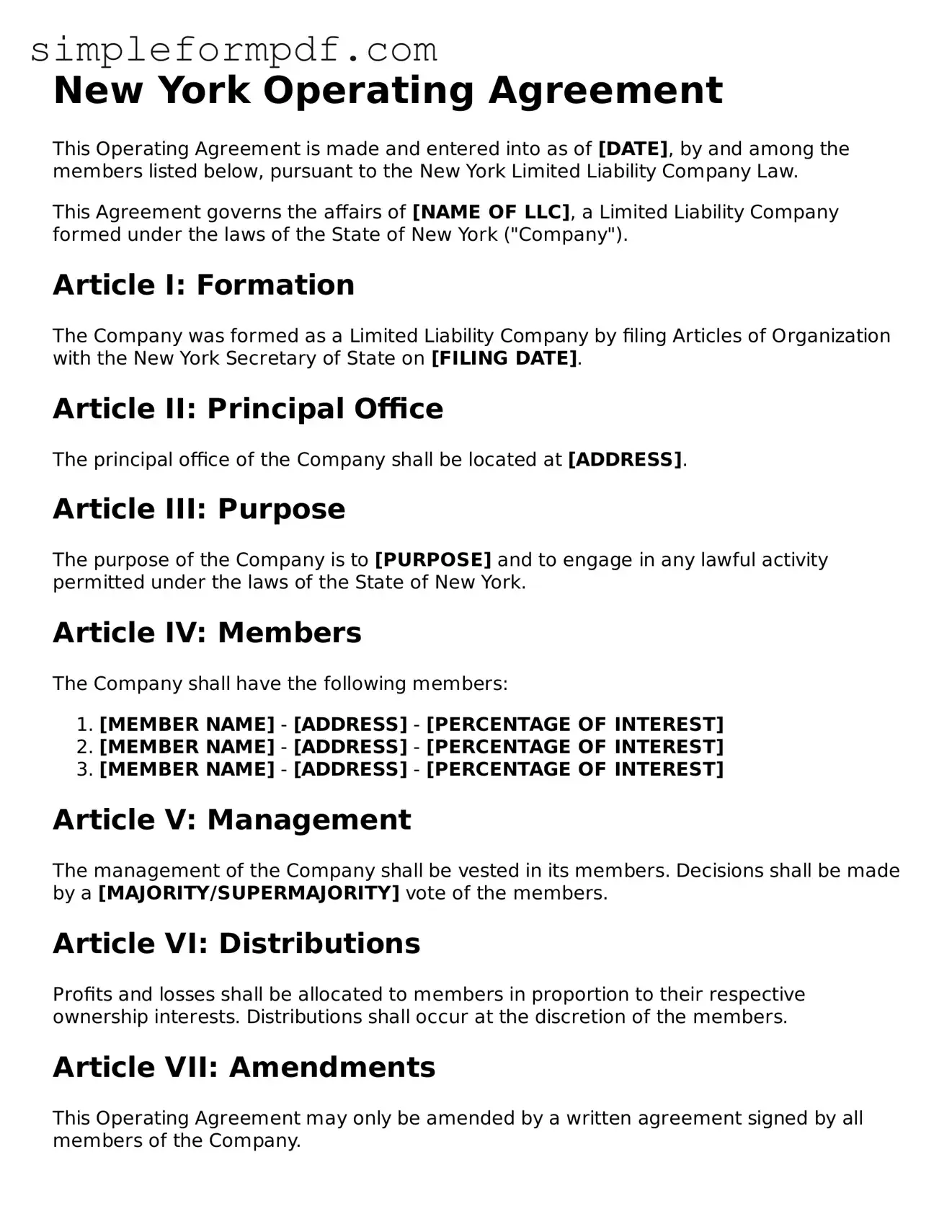New York Operating Agreement
This Operating Agreement is made and entered into as of [DATE], by and among the members listed below, pursuant to the New York Limited Liability Company Law.
This Agreement governs the affairs of [NAME OF LLC], a Limited Liability Company formed under the laws of the State of New York ("Company").
Article I: Formation
The Company was formed as a Limited Liability Company by filing Articles of Organization with the New York Secretary of State on [FILING DATE].
Article II: Principal Office
The principal office of the Company shall be located at [ADDRESS].
Article III: Purpose
The purpose of the Company is to [PURPOSE] and to engage in any lawful activity permitted under the laws of the State of New York.
Article IV: Members
The Company shall have the following members:
- [MEMBER NAME] - [ADDRESS] - [PERCENTAGE OF INTEREST]
- [MEMBER NAME] - [ADDRESS] - [PERCENTAGE OF INTEREST]
- [MEMBER NAME] - [ADDRESS] - [PERCENTAGE OF INTEREST]
Article V: Management
The management of the Company shall be vested in its members. Decisions shall be made by a [MAJORITY/SUPERMAJORITY] vote of the members.
Article VI: Distributions
Profits and losses shall be allocated to members in proportion to their respective ownership interests. Distributions shall occur at the discretion of the members.
Article VII: Amendments
This Operating Agreement may only be amended by a written agreement signed by all members of the Company.
Article VIII: Governing Law
This Agreement shall be governed by and construed in accordance with the laws of the State of New York.
Members’ Signatures
IN WITNESS WHEREOF, the undersigned have executed this Operating Agreement as of the date first above written.
- [MEMBER NAME] - Signature: ______________________ Date: _______________
- [MEMBER NAME] - Signature: ______________________ Date: _______________
- [MEMBER NAME] - Signature: ______________________ Date: _______________
